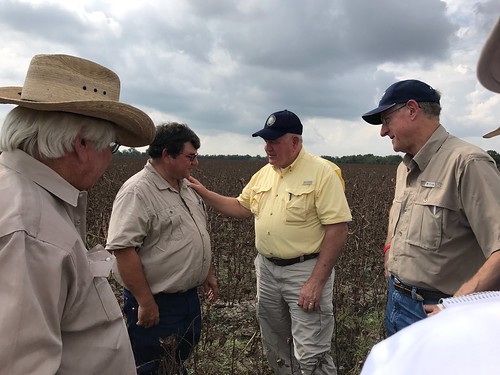
Over the last few weeks, we have seen parts of our country devastated by natural disasters. People in Florida, Georgia, Texas, Puerto Rico and the Virgin Islands experienced devastation that affected every part of their life, including food, housing, and their livelihood. President Trump called on leaders and government officials at all levels to put bureaucracy aside and lend a helping hand to those in need. At USDA, we have done our best to answer that call.
As Hurricane Harvey hit land along the shores of Texas, USDA ramped up efforts to provide assistance before, during, and after this disaster. Just recently, I was given the opportunity to meet with Texas cotton producers hurt by the wreckage to their farms from caused hurt by Hurricane Harvey. Their crops were battered, but Texans don’t give up easily.
Unfortunately, Hurricane Harvey was not the only natural disaster to strike. Hurricane Irma swept decimated countless farms and crop yields. In Georgia, downed pecan trees may set growers as much as back 10 years. To survey the damage, I toured the impacted areas with local leaders to meet with farm owners and discuss how USDA can help them recover.
I made a similar stop in Florida, where Hurricane Irma caused losses of 50 to 70 percent of southern Florida’s citrus. Like in Texas, many were also left without proper access to food and nutrition. When they began reporting shortages of food, USDA made it easier for schools affected by Hurricane Irma to feed students during this time of great need. These sensible and timely flexibilities ensure children receive the assistance needed.
Finally, as Hurricane Maria swept through the Caribbean, causing great damage to Puerto Rico and other islands, USDA again answers the call to help. Before the storm, USDA spread information on how to preserve food. Now, we are now in full recovery mode. USDA Law Enforcement Officers from the Forest Service acted as first responders ensuring the lives and security of victims. Our Forest Service saw teams are on the ground clearing roads and facility access points. USDA Food Packages are in the hands of first responders with the American Red Cross and the National Guard, and are currently being distributed in Puerto Rico (as well as in Florida and Texas), and USDA Foods are being used for congregate feeding in the Virgin Islands and Puerto Rico. As communications come online and travel becomes possible through the hard work of our FEMA partners, USDA agents will be out in the fields with the farmers, ranchers, and landowners assessing damage to their operations and advising what USDA assistance is available to them. USDA will continue to offer all possible aid and assistance.
When it comes to natural disasters, President Trump’s directive is to help people first and deal with paperwork second; and that is exactly what USDA is doing. It is paramount that USDA makes it as easy as possible for our programs to be administered, so no one affected by this disaster goes hungry or loses their livelihood. While we as a nation continue to recover from these recent tragedies, USDA will continue our work providing help to those who need it most.
Find out more about USDA hurricane and other natural disaster recovery resources on the website.


